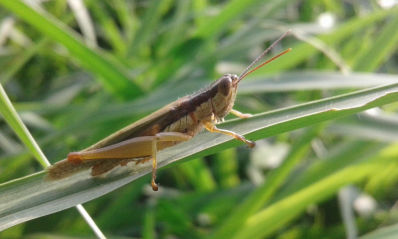Colons for lists: locust
The Grammar Bit!
Read the three scintillating list sentences opposite. You’ll remember from Year 2 that commas are used to separate individual items and actions in a list (apart from between the final 2 items or actions when the coordinating conjunction ‘and’ is commonly used instead).
Now that you are in Year 6, we can get a little bit more ‘sophisticated’ with our list sentence writing. Notice how a colon (:) has been used to introduce each list of items or actions. When using a colon in this way, each introductory clause (bold) should be able to stand alone as a main clause.
If the introductory clause cannot stand alone, it would be incorrect to interrupt the flow of it with a colon.
Example
(Incorrect) All insects need: water, air and food to live.
(Correct) All insects need the following requirements to survive: water, air and food.
Notice also how the words that follow the colon in each list do not start with a capital letter (unless, of course, they are proper nouns).
Scintillating Sentences
1) Locusts (like all insects) have three main body parts: a head, thorax and abdomen.
2) There are many areas of the world where locusts can be found: Africa, the Middle East and Asia.
3) Locusts have three specialised mouthparts: they have a serrated jaw that moves from side-to-side for cutting through plant stems, a secondary jaw for holding food and a lower lip.

Did you know?
Once a locust has devoured every crop in its path, or if food is in short supply, it may become cannibalistic and start eating its own species.

 Sign in
Sign in

